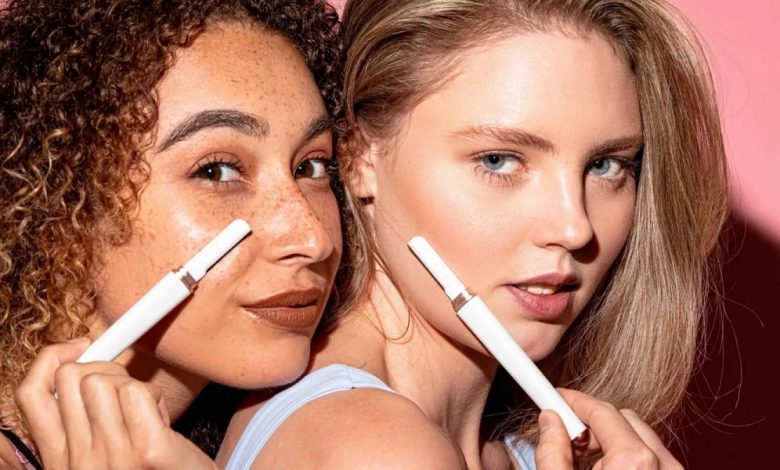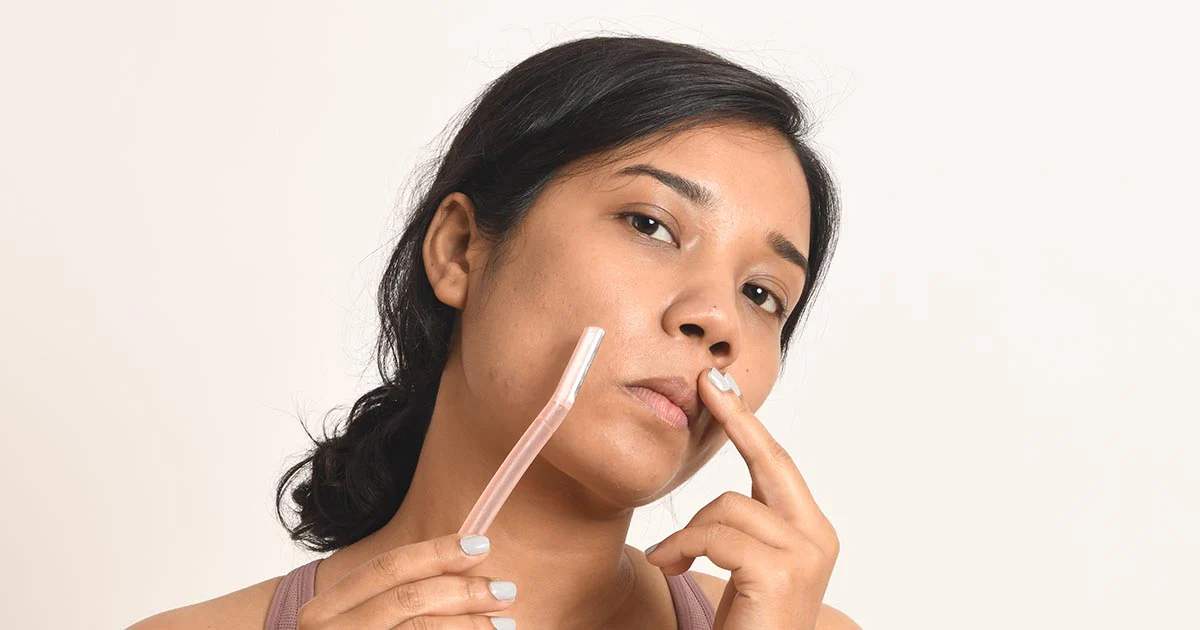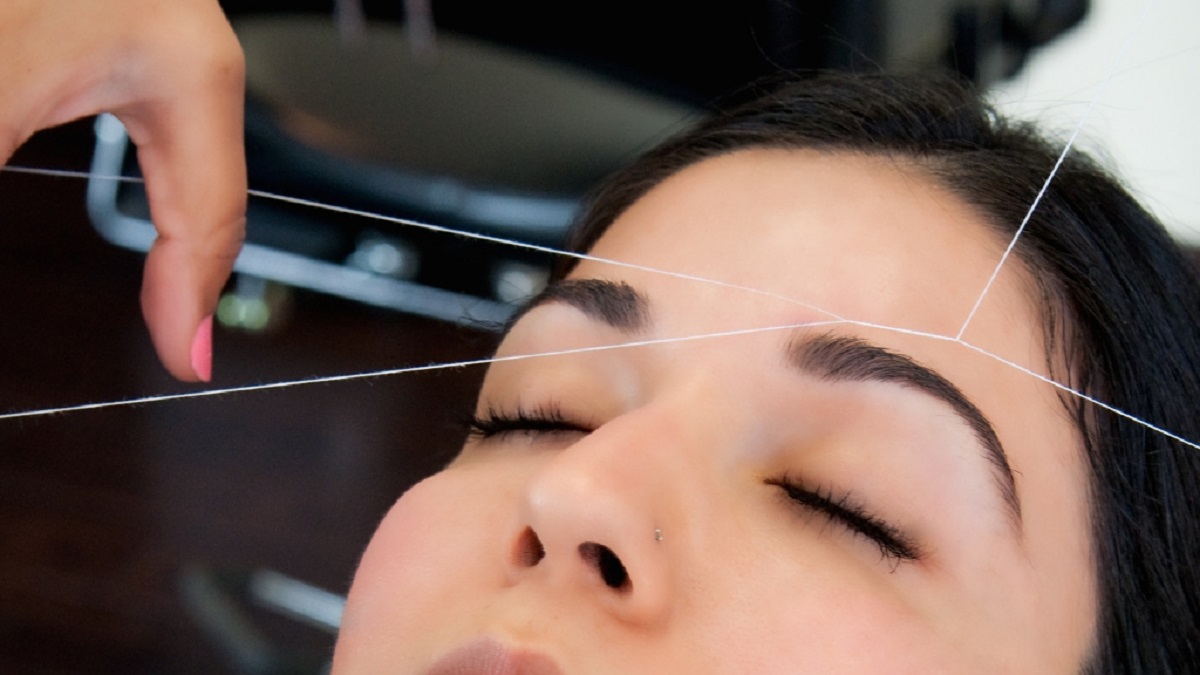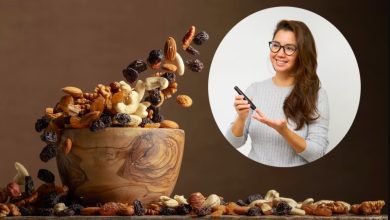Threading VS Shaving For Facial Hair Removal: Which Is Better?

Threading VS Shaving: Facial hair removal is an essential part of many individuals’ grooming routines, and two popular methods are threading and shaving.
Threading VS Shaving, Both techniques have their unique benefits and drawbacks, making the choice dependent on personal preferences, skin types, and desired results. This essay explores the pros and cons of threading and shaving to help you decide which method is better suited for your needs.
Threading VS Shaving For Facial Hair Removal
What Is Threading?

Threading VS Shaving, Threading is an ancient hair removal technique originating in South Asia and the Middle East. It involves using a twisted cotton or polyester thread to trap and pull out hair at the follicle level. This method is particularly favored for shaping eyebrows and removing fine facial hair.
Advantages Of Threading:
Precision: Threading is highly precise, making it ideal for shaping eyebrows and removing targeted areas of facial hair.
Long-Lasting Results: Because hair is removed from the root, results last 3-6 weeks, depending on hair growth cycles.
No Chemicals: This method is chemical-free, making it suitable for sensitive skin types.
Cost-Effective: Threading is relatively affordable, especially when performed at home.
Disadvantages Of Threading:
Painful Process: The pulling sensation can cause discomfort, particularly for sensitive skin.
Time-Consuming: Threading larger areas can take longer compared to shaving.
Skin Irritation: Individuals with sensitive or acne-prone skin may experience redness or irritation.
What Is Shaving?
Threading VS Shaving, Shaving involves using a razor to remove hair at the skin’s surface. It is a common method for facial and body hair removal, with many razors designed specifically for facial use.
Advantages Of Shaving:
Quick And Easy: Shaving is one of the fastest methods for removing facial hair and can be done at home without professional assistance.
Painless: Unlike threading, shaving is virtually painless when done correctly.
Exfoliation: Shaving acts as a gentle exfoliator, removing dead skin cells along with hair.
Affordable Tools: Razors and shaving creams are readily available and inexpensive.
Disadvantages Of Shaving:
Short-Term Results: Hair is cut at the surface, so regrowth typically appears within a day or two.
Risk Of Cuts And Irritation: Improper technique or dull razors can lead to cuts, razor burn, or ingrown hairs.
Not As Precise: Shaving is less precise than threading for shaping eyebrows or removing small areas of hair.
Key Factors To Consider
Skin Type:
Threading VS Shaving, Threading is better for sensitive skin since it does not involve sharp blades or irritants.
Shaving can be suitable for normal skin types but may exacerbate acne or dryness.
Pain Tolerance:
Threading can be painful, especially for beginners.
Shaving is pain-free if done properly.
Hair Regrowth:
Threading VS Shaving, Threading removes hair from the root, resulting in slower regrowth.
Shaving only cuts hair at the surface, so regrowth is faster and stubbly.
Time And Convenience:
Shaving is faster and more convenient for busy individuals.
Threading requires more time and skill, particularly for larger areas.
Which Method Is Better?
Threading VS Shaving, There is no definitive answer as to which method is superior—it depends on individual preferences and goals. If you prioritize precision, longer-lasting results, and have a higher pain tolerance, threading may be the better option. However, if you value convenience, pain-free removal, and quick results, shaving is an excellent choice.
Tips For Optimal Results

Threading Tips:
Ensure the thread is clean to avoid infections.
Apply soothing aloe vera gel or a cold compress after threading to reduce redness.
Shaving Tips:
Use a clean, sharp razor designed for facial use.
Shave in the direction of hair growth to minimize irritation.
Always moisturize after shaving to prevent dryness.
Conclusion
Threading VS Shaving, Both threading and shaving have their advantages and limitations, making the decision highly personal. Consider your skin type, pain tolerance, and lifestyle when choosing a method. Regardless of the technique, proper aftercare is essential to maintain healthy and smooth skin.
Also Read:
When Should Chin Hair Growth In Women Be A Cause For Concern?
Excessive Washing Of Skin Effect: 6 Excessive Washing Of Skin May Increase Disease Risk
The Best Hydrating Masks For Oily And Acne-Prone Skin: A Guide To Balanced Hydration And Clear Skin
Skincare After Shaving: Steps You Should Observe After Shaving




